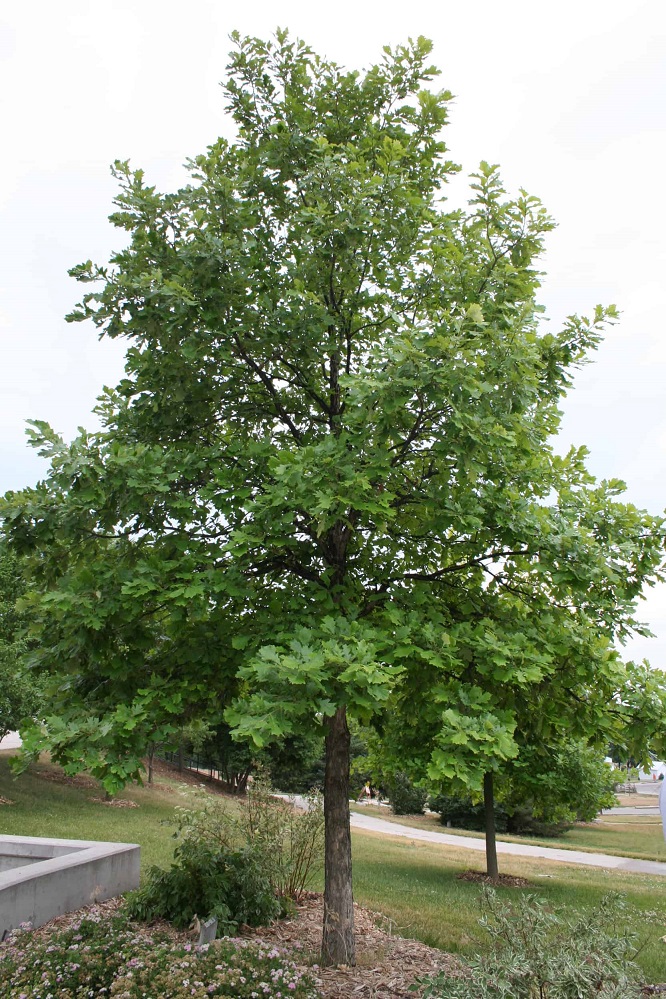April 21, 2024 – Weeping willows are often considered to be beautiful trees and are usually associated with water, such as a creek, river, or pond. Outside of a large location, however, they quickly become overcrowded and a nuisance. When planted near homes, they often invade water pipes and sewer systems. Their drooping limbs with leaves can shade out desired lawn grasses. They have a short life span and as they age, limbs become brittle and can break. So, what’s a suitable alternative?
Swamp white oaks (SWO) are trees having the beauty of a willow without all the negative aspects. First, SWO are well known for having a long lifespan. They grow 1-2’ per year, but live to 300 years. Depending on your source, SWO reach 50-70 feet tall with a similar width. They prefer full sun but will tolerate partial sun (with a reduced growth rate!).
SWO prefer neutral to acidic soils. They grow well in clay, sandy, or loam soils, although they prefer well drained soil. If the soil is poor, fertilizers or compost may be required. They tolerate hot summers or subzero winters. They can grow in water-saturated soil, but such is obviously not a requirement. In fact, while watering weekly be required in the first two summers, once established, they can withstand dry periods.
SWO are members of the white oak group. They have 5 to 7-inch long leaves with rounded, shallow lobes. The leaves are dark green with gray to white downy undersides. An interesting feature is acorns that grow on thin stalks up to four inches long.
There are two SWO cultivars. For those with large urban or country yards, the American Dream SWO has a pyramid shape with dense foliage. The Beacon’s ‘Bonnie and Mike’ SWO has a narrow, columnar-shape w/branches that grow upright instead of outward.






